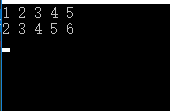資料結構——佇列的鏈式儲存結構以及實現
阿新 • • 發佈:2019-01-10
佇列也是一種特殊的線性表,只允許在一端進行插入操作,在另一端進行刪除操作。允許插入的一段為對尾,允許刪除的一端為隊頭。本次記錄的是佇列的鏈式儲存結構以及實現。該儲存結構有兩個指標,一個指向頭節點,稱為頭指標(front);一個指向隊尾,稱為尾指標(rear)。當front==rear時,表示空佇列。當需要在佇列中插入元素時,需要將隊尾結點指向新插入的結點,然後將尾指標指向新插入的結點。當要在佇列中進行刪除操作時,只需讓頭指標指向隊頭結點的下一個結點即可。實現程式碼如下:
#include "iostream"
using namespace std;
#define OK 1
#define OVERFLOW -1 執行結果:

